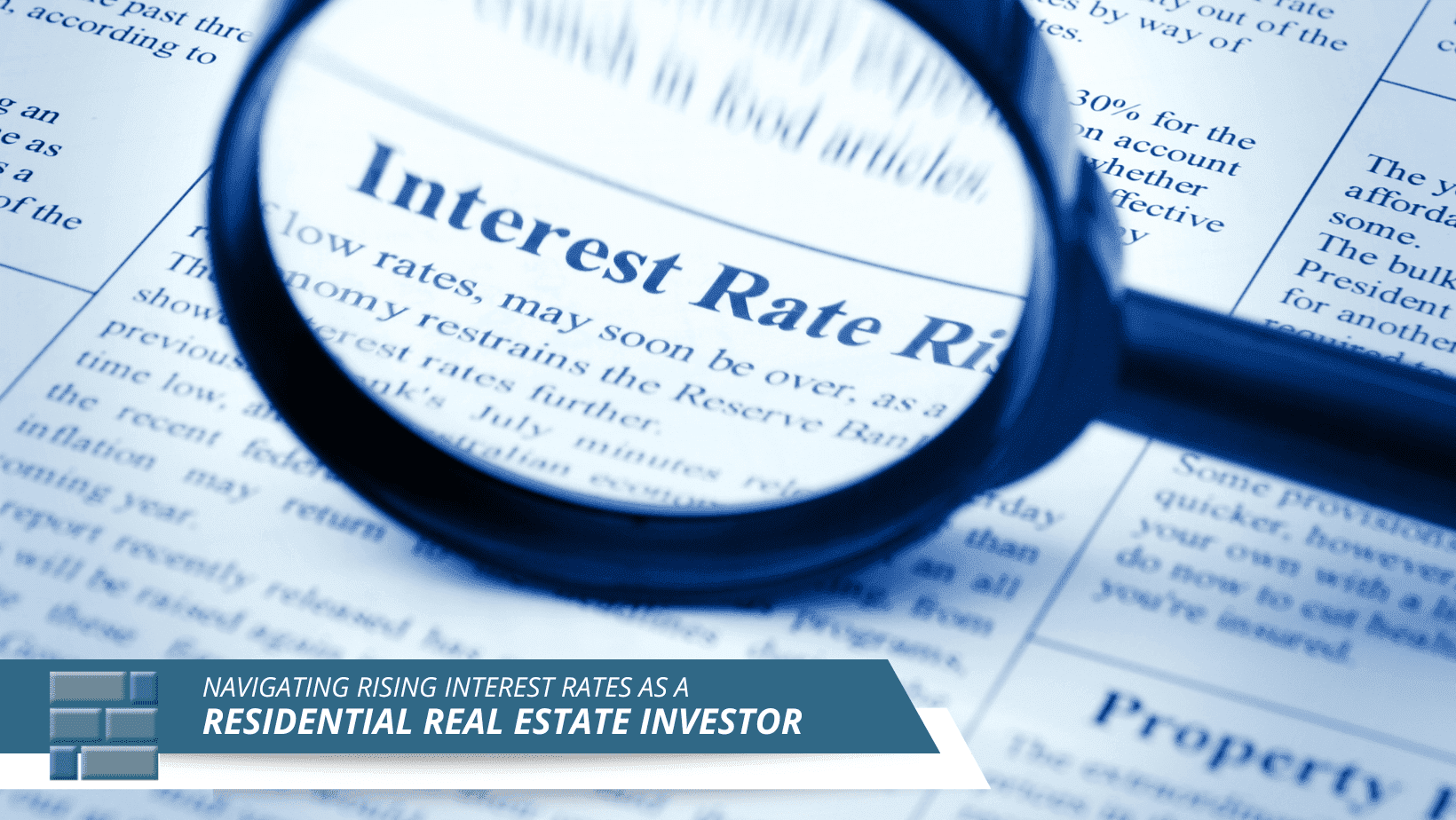Recent Posts
Navigating Rising Interest Rates as a Residential Real Estate Investor

Posted: | Author: Jeff Miller- Senior Vice President, Foundation
At Foundation we advise residential investors to consider alternate strategies in response to rising interest rates, depending on their investment objectives and their local market conditions. Here are a few alternatives:
Adjust your financing structure: Rising interest rates mean higher borrowing costs, which will reduce an investor’s profit. No one wants to lock in today’s high rates for 10, 15, or 30 years. An alternate financing option is a 30-year adjustable-rate mortgage (“ARM”) with a fixed-rate for 5 years, but only a 3-year prepayment penalty period. Foundation and other lenders offer this option and even a 10-year interest-only period to start the 30-year term. Without principal payments net cash flow after debt service increases and offsets higher rates.
Higher equity contribution: Another option is to put more equity into the investment to lower the Loan-to-Value (“LTV”) to the 60-65% LTV range. After a year of sharp rate hikes by the Federal Reserve, lenders are concerned about falling property values and are offering better rates and terms for less risk at lower LTV. Less debt means less risk for the borrower too in an uncertain economy and property market. And in the loan structure outlined above the investor can always refinance long-term without penalty should interest rates decrease over the next 3-5 years.
Shift your investment strategy: If more equity is not available and higher debt service payments will drain your rental income, consider a fix & flip strategy instead of buy and hold. Owner-occupants still have a lot of cash and can buy your flip with 30-year mortgages insured by government agencies. These interest rates are lower than private lenders can offer because they are partially insured by these agencies. Investors can realize faster profits by flipping and many don’t want to deal with tenants and day-to-day property operations, or pay 6-8% of gross revenue to a property manager.
Diversify your portfolio: Flipping for faster profits enables you to take some risk off the real estate table and diversify into other investments, including stocks, bonds, ETFs, unit trusts, and other public and private asset classes. Few of Foundation’s clients are liquidating much of their real estate portfolios, while others are going full speed ahead with new investments. This is a good time to work with a financial advisor to diversify your entire portfolio to reduce overall risk, volatility, and exposure to interest rate fluctuations, especially if you can see retirement out on the horizon.
Increase your asking rent: Rent increases account for 30-40% of today’s higher inflation rates. Many investors fall into the habit of allowing unit rents to lag the general inflation rate, especially when trying to retain “good tenants.” Keep in mind that apartment rents increased 10-20% in most markets over the past few years while vacancies dropped to
historic lows. Your “good tenants” may not have better choices in nearby competitive properties. You need to start moving up your contract rents, especially if you are facing the maturity dates of low-interest loans that must be refinanced at today’s higher interest rates. The income side can offset the higher debt service you are facing, but it’s best to move rents up gradually. The amount of rent increase that tenants can absorb will vary based on the demographics and cost of buying a typical home in your local market. Home prices are still high and higher mortgage rates mean that fewer tenants will have to option to buy homes in the near term.
Investors need to develop a portfolio strategy that includes more than just real estate, especially in today’s high interest and high inflation environment. The strategy should consider a variety of factors, including business and family financial planning (i.e. college and retirement saving), shifting market conditions, and risk management. The investor needs to decide on growth or income, or a balanced strategy. Leverage is a double-edged sword that enhances returns in certain market cycles and destroys returns in down-market cycles. In these uncertain times one general rule may be “less is more” when it comes to leveraging your real estate investments.
We at Foundation look forward to helping you consider strategic options for your real estate portfolio and new investments in 2023.